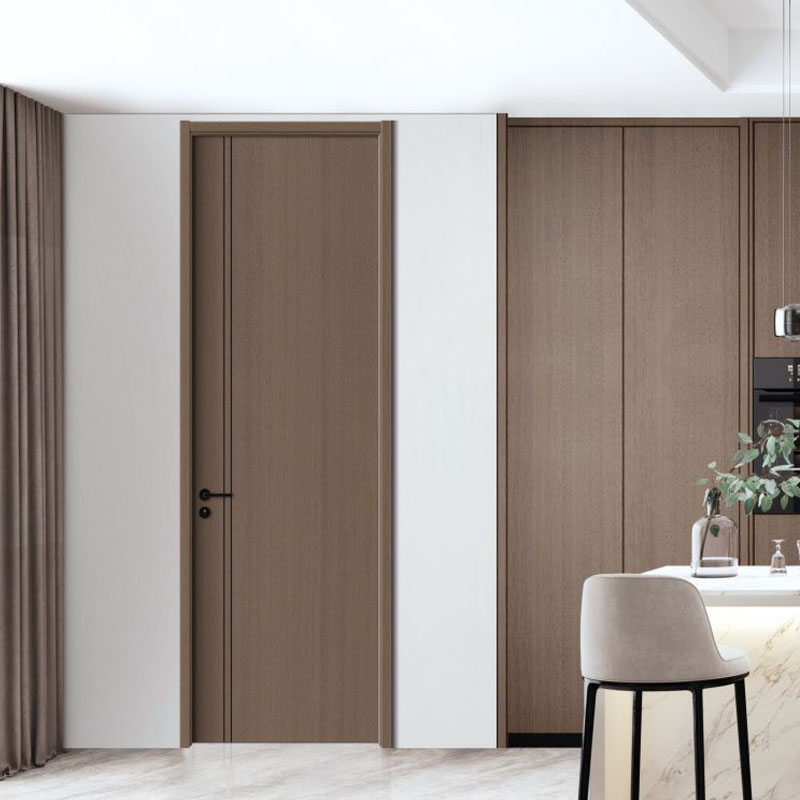Product Consultation
Your email address will not be published. Required fields are marked *

How does the surface finish of the Melamine Laminated Wooden Door resist scratches, stains?
Apr 22,2025
How does a Glass Wooden Door contribute to the overall energy efficiency of a building?
Apr 14,2025
How resistant is the PVC coating on a PVC MDF door to scratches, stains, and fading over time?
Apr 07,2025
Moisture Resistance: Melamine laminated wooden doors are engineered with a specialized melamine coating that acts as a formidable barrier against moisture. This laminate is designed to provide an effective shield that prevents the underlying wood substrate from absorbing water or humidity. Traditional wooden doors often suffer from warping due to moisture fluctuations, which cause the wood to expand or contract. The melamine laminate mitigates this issue by creating a waterproof layer that significantly reduces moisture penetration. This enhanced moisture resistance is particularly beneficial in environments with high humidity, such as bathrooms or coastal areas, where traditional wood doors might fail to maintain their shape and structural integrity.
Stability of Core Material: The core of a melamine laminated door is typically composed of engineered wood products such as medium-density fiberboard (MDF) or particle board. These materials are chosen for their superior dimensional stability compared to solid wood. MDF and particle board are manufactured under controlled conditions, resulting in a more uniform density and less susceptibility to warping. The melamine laminate enhances the stability of these core materials by providing a consistent surface that reduces the likelihood of uneven expansion or contraction. Unlike solid wood, which can experience significant changes in shape due to environmental factors, engineered wood cores are designed to remain stable and maintain their form over time.
Uniform Surface: The melamine laminate is applied to the wooden core through a high-pressure process that ensures an even and consistent coating. This uniform surface distribution is crucial for maintaining the door’s structural integrity. The melamine layer bonds tightly to the core material, creating a smooth and continuous surface that helps distribute physical stresses evenly. This uniform coating minimizes the risk of localized expansion or contraction, which can lead to warping or cracking. The melamine laminate provides a protective layer that guards against physical impacts and surface damage, further enhancing the door’s durability.
Temperature Fluctuations: Melamine laminated wooden doors are particularly effective in handling temperature fluctuations due to the thermal stability of the melamine laminate. Traditional wooden doors are highly sensitive to temperature changes, which can cause the wood to expand or contract, leading to warping or cracking. The melamine laminate, however, is designed to remain stable across a range of temperatures, minimizing the impact of thermal stresses on the underlying wood. This characteristic makes melamine laminated doors suitable for environments with varying temperatures, ensuring that the door remains stable and functional regardless of external temperature conditions.
Quality of Laminate: The durability and performance of a melamine laminated door are heavily influenced by the quality of the laminate used. High-quality melamine laminates are engineered to be highly resistant to physical damage, including surface cracking. These laminates are manufactured using advanced technology to ensure that they can withstand everyday wear and tear, impacts, and abrasion. Premium melamine laminates are also designed to maintain their appearance and functionality over time, providing a long-lasting solution for door applications. However, while high-quality laminates offer enhanced resistance, it is important to recognize that they are not entirely impervious to extreme impacts or excessive force.
Walnut MDF Plywood Melamine Interior Door

Your email address will not be published. Required fields are marked *











